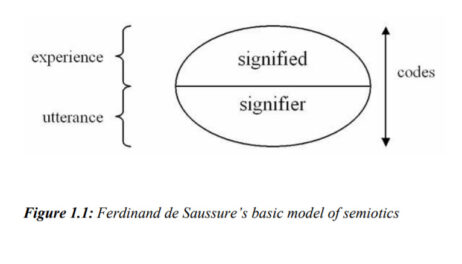This article aims to give information about director David Lynch and his psychoanalytic techniques, which are related to the subconsciousness of audiences. It can be observed that David Lynch, who uses metaphors, metonymies, and symbols through moving to semiotics based on semiotic scientific analysis, is intertwined with psychoanalysis by revealing his uncanniness and therefore benefiting abundantly from Lacan and Freud. Since his world is quite dark and complex, observing his films and understanding the language of symbols in addition to analyzing his films are essential. Each symbol has its equivalent, which not only constitutes the structure of his films but also leads the audience to dream imagination. Each scene of his films is part of a separate film language, and the pieces combine in order to give linguistic integrity. David Lynch, who is an auteur, opens new windows to the visualization of aesthetic and visual codes in the minds of the audiences. He pays attention to characters and objects entering frames and frames. Like Mulholland Drive, Lost Highway, and many more, he creates a system within his films, which is used in analyzing the system, and the aim is animating the mind.
Introduction of Semiotic theory and David Lynch
In cinema, a semiotic theory is crucial, because many films use symbols and metaphors to make sense and connect the visual scenes and sequences with the signifier and the signified into a meaningful language of film. The indicator usually refers to the movie story through format codes. It can be referred to as a phenomenon. Image is the acquisition of the object by visual encoding. The phenomenon is the intuition of the object. Under each scene and in the subtexts of the dialogues, there are a lot of side meanings, which can be metaphorical. There is a difference between what is meant and what is indicated. Sometimes an image forms in the mind of the spectator, and the formed image is kind of a different element reflected from his world. As indicated above, director David Lynch combines semiotics with psychoanalysis and adds depth to his films. The real purpose is opening the gates to the subconsciousness while analyzing, and semiotics work here as passwords. He tries to solve subconsciously subdued emotions like decoders. David Lynch, who sometimes reinforces symbols and narratives without resorting to dialogues, gets his support from the theorist Roland Barthes, because the film is in his language, and the symbols, metaphors, and metonymies in it are like words that form parts of a language. He emphasizes the film with symbols. Since semiotics is one of the most commonly used methods, reading films in this way might be effective. Every object has a task in the story, and they often replace symbols.
Mind Games and David Lynch
From this point of view, my aim in choosing semiotics that makes mind games is to understand why David Lynch chose this method of narration and to analyze and shape all the signs and indications, which are used by him. In this article, I am going to use narrative analysis with semiology and psychoanalysis. “In narrative analysis, a representation of a series of unified events (occurrences and actions) is situated in one or more settings. A narrative may be fictional, factual, or a blend of the two. These events may be arranged chronologically or nonchronologically” (Phillips, 2005: 637).









